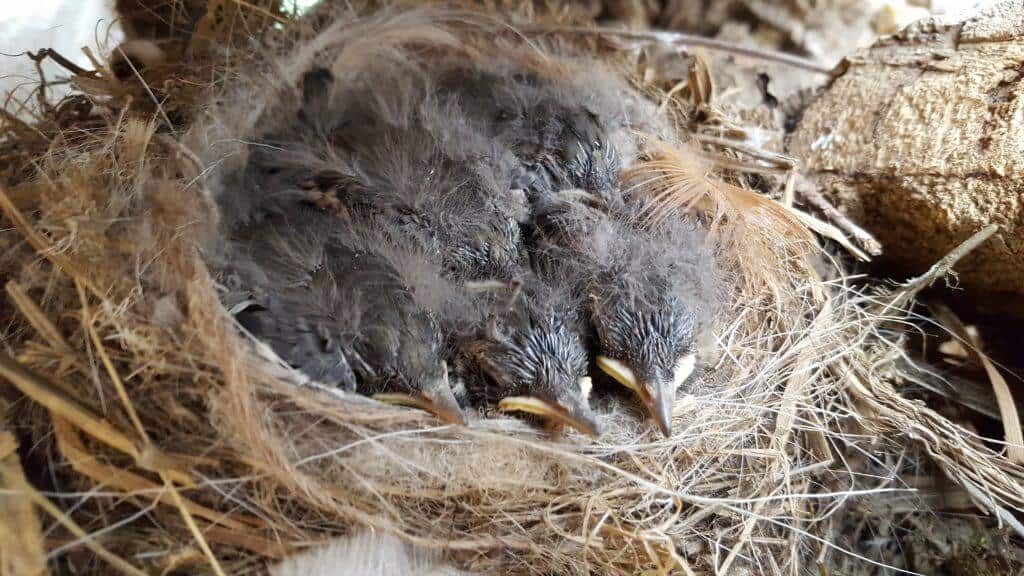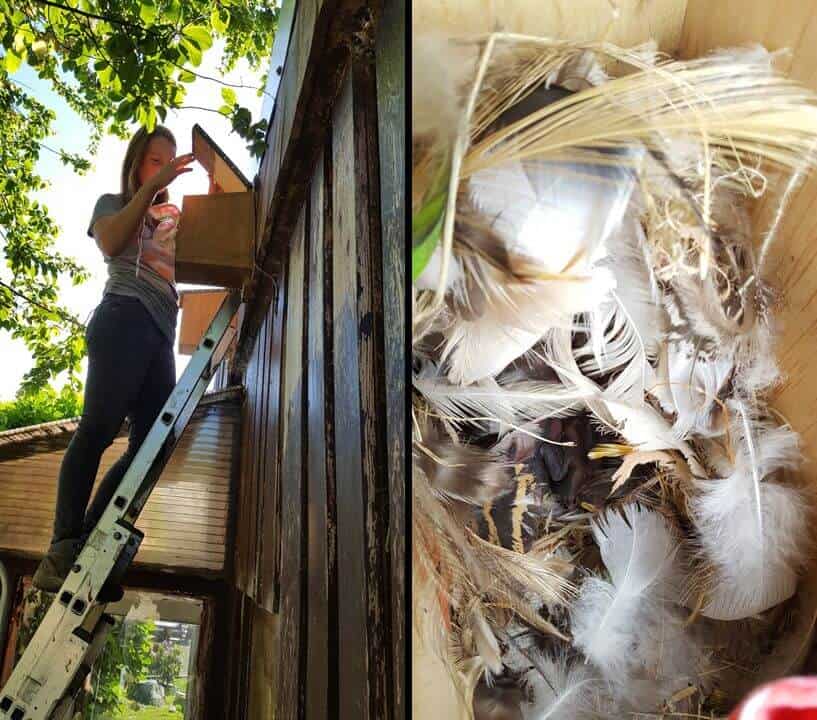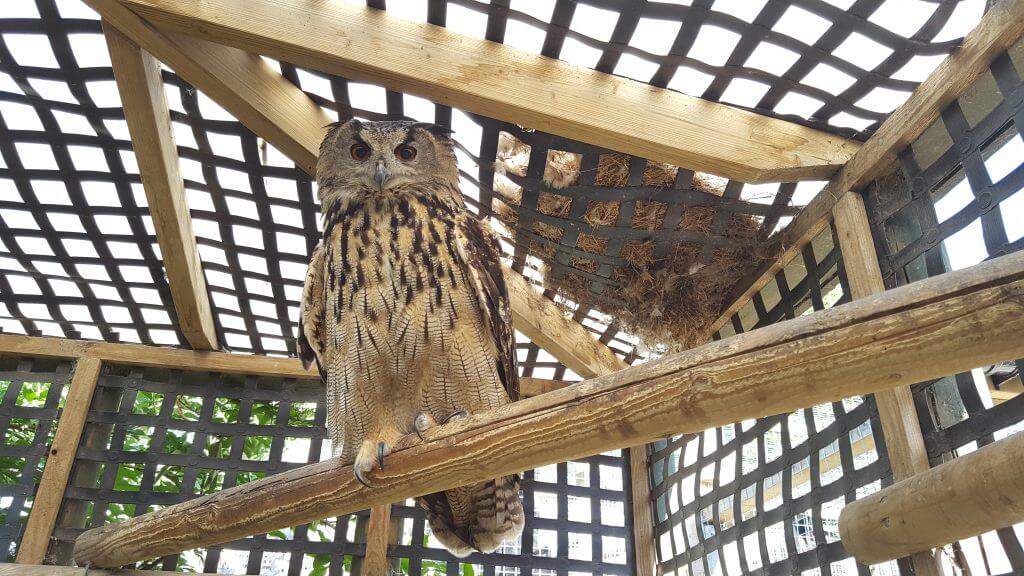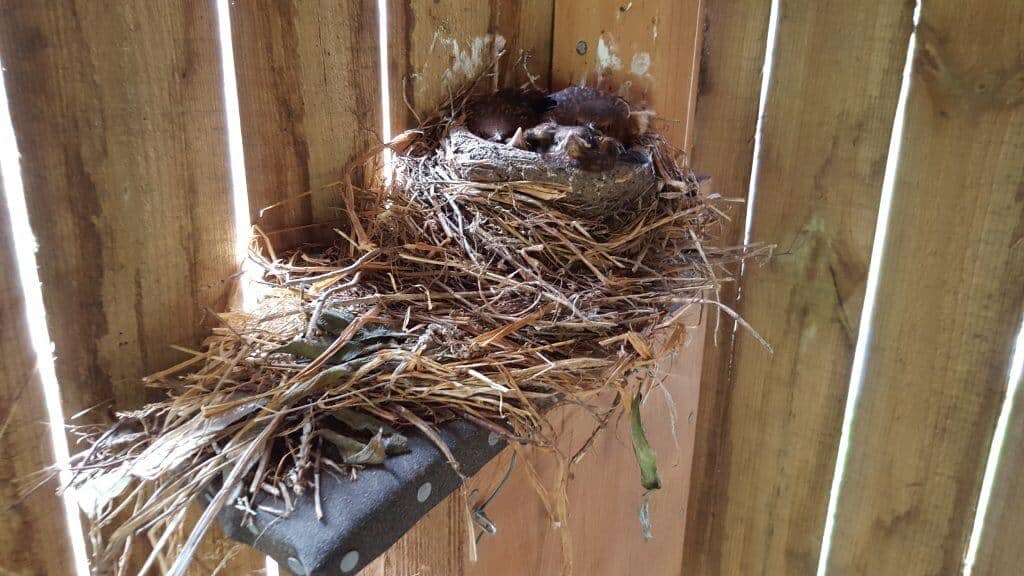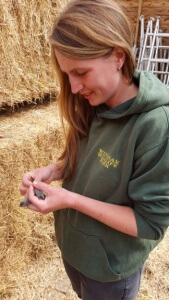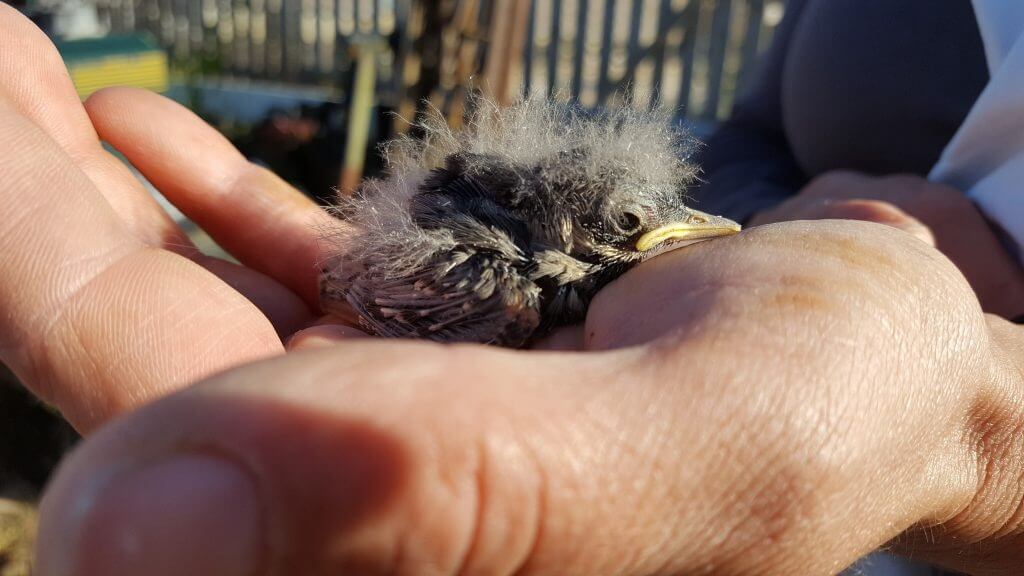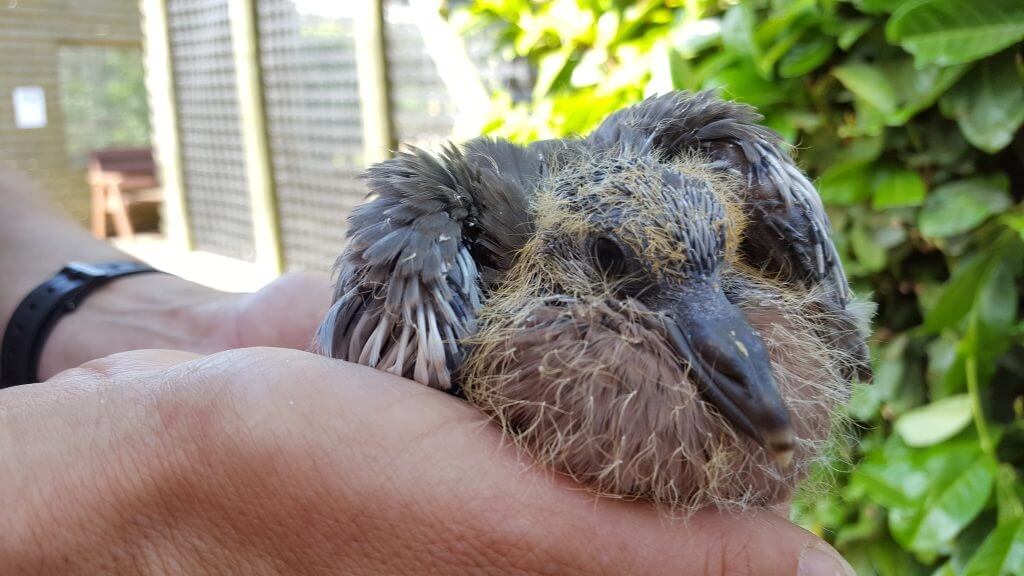A wide variety of wild birds make use of the park throughout the year, whether it’s taking advantage of the free food on offer, finding a nice safe place to shelter or just stopping off on migration. I have 50 species on my personal check list of birds that I have seen or heard whilst at work. My favourites include Kingfisher, Little Owl and even a Water Rail! I’m particularly fascinated by those taking up residence during the breeding season.
On my days off I volunteer at Sandwich Bay Bird Observatory. As part of my work there I’ve been contributing to the Nest Record Scheme (NRS) since 2014. The project is run by the British Trust for Ornithology (BTO) and gathers essential information on the breeding success of the UK’s birds. I started recording at the park in 2016 with the help of East Kent Wildlife Group. They provided and installed an array of nest boxes around the park, including an Owl box which sadly hasn’t been discovered by our intended visitors yet!
So far we have documented a total of 89 Nest Records of 11 species, so that’s 89 individual nests over two years, not bad at all! Unfortunately during the first year of monitoring I was on holiday in the middle of the breeding season which explains the difference in results. Each nest record collects information on a single breeding attempt and should contain where the nest is, habitat type, location and what’s in it (once you’ve identified which species lives there of course!). Anyone can become a nest recorder but the welfare of the birds has to be top priority as nests can easily be damaged or disturbed. Be aware that some rare species are protected by law and require a special “Schedule 1 Licence” to monitor. All recorders must follow the NRS Code of Conduct, more about this and the scheme can be found here: https://www.bto.org/volunteer-surveys/nrs
| Species | 2016 | 2017 | Total |
| Blackbird | 5 | 12 | 17 |
| Collared Dove | – | 4 | 4 |
| Goldfinch | 2 | 4 | 6 |
| House Sparrow | 8 | 27 | 35 |
| Pied Wagtail | 1 | 2 | 3 |
| Robin | – | 1 | 1 |
| Song Thrush | 2 | 4 | 6 |
| Starling | 1 | 2 | 3 |
| Swallow | 2 | – | 2 |
| Woodpigeon | 4 | 6 | 10 |
| Wren | 1 | 1 | 2 |
| Total | 26 | 63 | 89 |
Number of Nest Records at Wingham Wildlife Park documented in 2016 and 2017.
By far the easiest nests to monitor are those in a nest box as it is simple to access and count how many eggs and chicks are present. I really enjoy seeing what materials they use to construct their masterpieces. Comically we often find nests lined with parrot and poultry feathers and fur from our animals (donkey and deer seem to be the most desired). I did laugh when a House Sparrow decided to weave porcupine quills into its nest! These charming birds make full use of our boxes at the park. This year we achieved 12 nest records for House Sparrow from our boxes with a further 15 coming from unenclosed or natural “open nests”.
Open nests are usually well camouflaged making them hard to find, the birds generally don’t want their precious cargo to be found by predators! In my experience at the Observatory it takes a while to get your eye in, so I was quite surprised when I started looking for breeding birds at the park. Some species didn’t seem to mind being in plain sight which made searching for them easier at least. The number of nests we found in a relatively small area seemed to be high compared to our searching at other rural sites. My colleagues have also been very keen and have even come across nests which we hadn’t discovered!
My favourite subject had to be a Blackbird that decided to build her nest right on top of one of our boxes; she didn’t seem bothered at all by the frequent passers-by and managed to raise 3 broods of young! I don’t think a nest as exposed as this would have been successful outside of the park. They definitely seem to benefit from a lack of predators here. This year we logged 12 nest records for Blackbirds and whilst we think of them as being common, the BTO thinks they may be under recorded on the NRS making them a priority species.
During my time at the Bird Observatory I spend most of my time bird ringing. I had to train there for two years to achieve a permit to legally handle and monitor wild birds. This work is vital in understanding wild bird populations and aids bird conservation. Whilst any nest recorder can count the contents of a nest, only licenced bird ringers are legally allowed to pick up and handle chicks. To find out more about bird ringing see my previous blog here: http://winghamwildlifepark.co.uk/2384-2/
Even though I already had a permit to ring birds, I was only authorised to process selected adult birds. I needed to be supervised by someone with the correct licence whilst ringing nestlings. Thankfully, Sarah from East Kent Wildlife Group was willing to accompany me on the frequent trips to the park and took me under her wing. It has taken me 3 years to gain enough experience to achieve my own Endorsement which I’m hoping to put to good use in 2018 (and hopefully Sarah will still be helping)!
| Species | 2016 | 2017 | Total |
| Blackbird | 15 | 23 | 38 |
| Goldfinch | – | 4 | 4 |
| House Sparrow | 15 | 56 | 71 |
| Pied Wagtail | 5 | 9 | 14 |
| Robin | – | 3 | 3 |
| Song Thrush | 2 | 13 | 15 |
| Swallow | 7 | – | 7 |
| Woodpigeon | 2 | 5 | 7 |
| Total | 46 | 113 | 159 |
Number of individual chicks ringed at Wingham Wildlife Park during 2016 and 2017.
But why is ringing birds in the nest so important? Our records contribute to a European-wide database. The Nest Records are useful for providing information on productivity, but by marking the birds as individuals we can then study survival and its influence on population trends. The advantage of ringing a chick in the nest is that we then know exactly where the bird has come from if it is found again and how hold it is. This data can then be assessed and is crucial for conservationists trying to reverse declines and manage habitats correctly.
I really hope you enjoyed learning about Nest Recording, I’m already excited to see what species we will find starting a family at the park next year. I will leave you with a picture of a Woodpigeon Squab which I find adorable, but no one else seems to share that opinion!
Links:
Sandwich Bay Bird Observatory: http://www.sbbot.org.uk/
East Kent Wildlife Group: http://www.ekwg.org/
